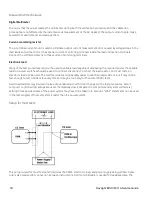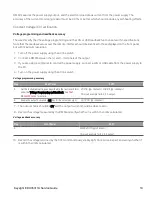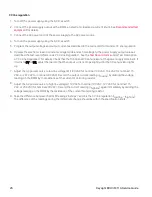
CV line regulation
This test measures the change in output voltage that results from a change in AC line voltage from the minimum to
maximum value within the line voltage specifications.
1.
Turn off the power supply using the AC line switch.
2.
Connect the power supply output with a DMM and an electronic load.
3.
Connect a variable AC Source or Variac to the AC input, set to an appropriate line voltage for the power supply
configuration.
4.
If you are using a PC to control the power supply, connect a LAN, or USB cable from the power supply to the
PC.
5.
Turn on the power supply using the AC line switch.
6.
Set the power supply settings as described in the test record form under “CV Line Regulation”. See the
under “CV Line Regulation” for details. Enable the output.
7.
Operate the electronic load in constant current mode and set its current to the value in the test record form
under “CV Line Regulation”. See the
under Test Description of “CV Line Regulation” for
details. Check that the front panel CV annunciator of the power supply remains lit. If it turns to
CC
or
UR
, adjust
the load so that the output current drops slightly until the CV annunciator lights up.
8.
Adjust the AC power source to low line voltage limit (90 VAC for nominal 100 VAC, 104 VAC for nominal 115
VAC, or 207 VAC for nominal 230 VAC). Record the output reading on the DMM as Vlowline.
9.
Adjust the AC power source to high line voltage (110 VAC for nominal 100 VAC, 127 VAC for nominal 115 VAC,
or 253 VAC for nominal 230 VAC). Record the voltage reading on the DMM immediately as Vhighline.
10.
Take the difference between the DMM readings in steps 8 and 9 that is the CV line regulation (Vlowline – Vhigh-
line). The difference of the readings during the immediate change should be within the limit calculated from the
specification.
Keysight EDU36311A Service Guide
21













































